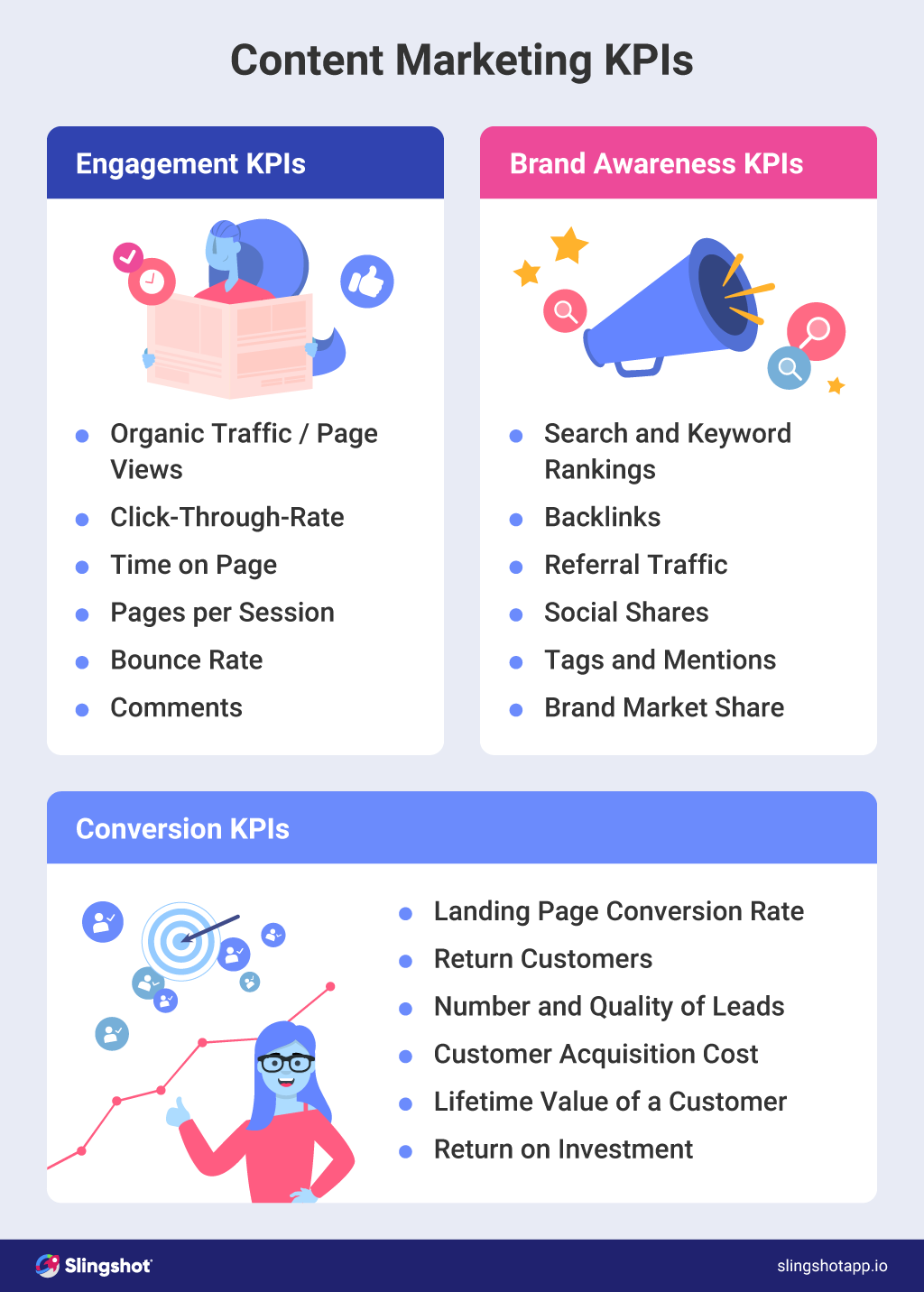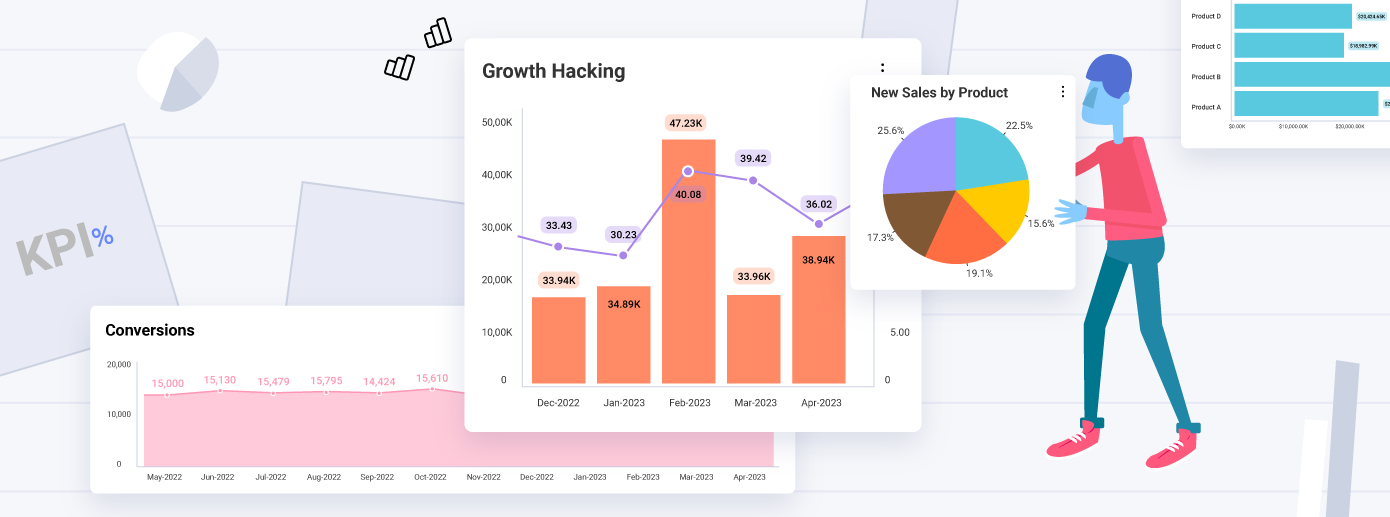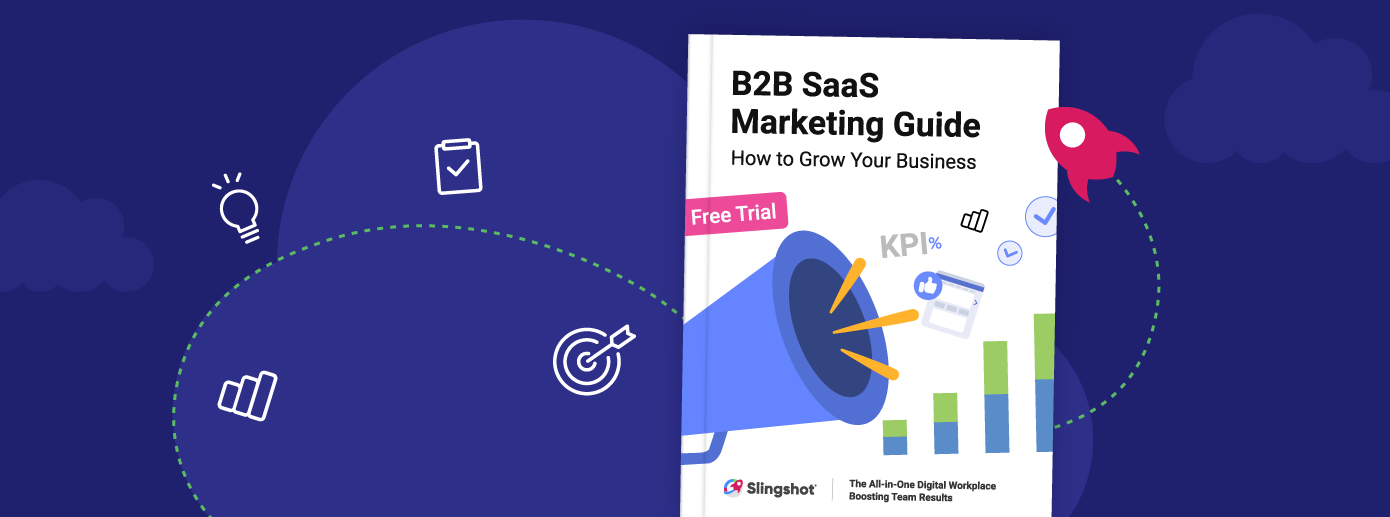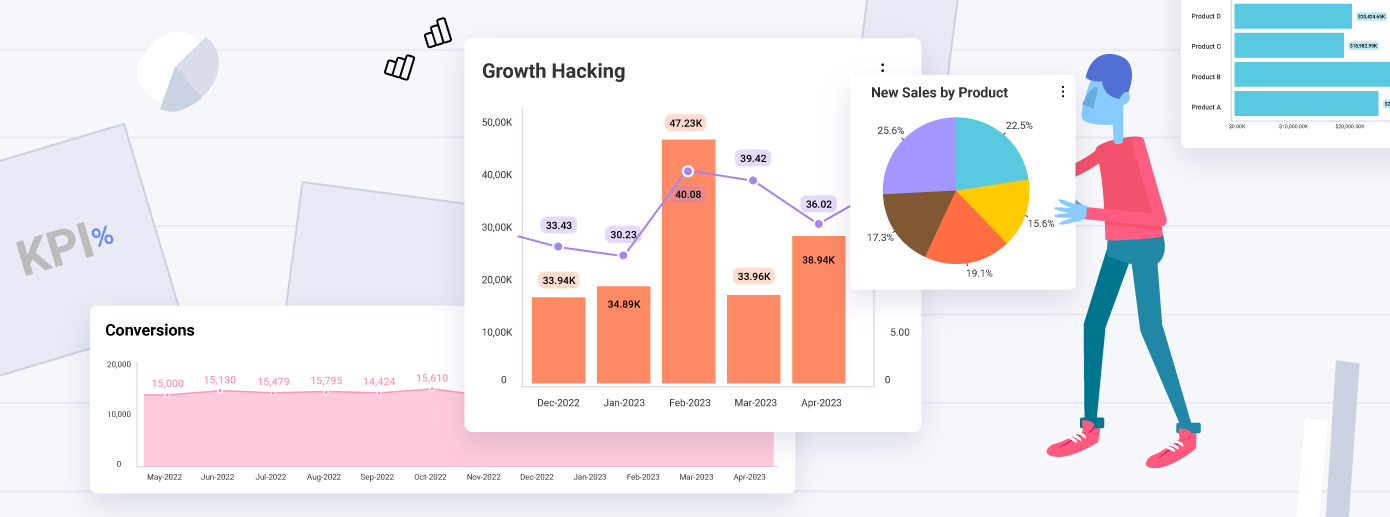

Content Marketing KPIs You Should Track
Tracking the right content marketing KPIs is essential for understanding how your efforts are contributing to your business goals. In this article, we’ll walk you through the most important content marketing metrics to monitor and help you determine which content performance metrics are most aligned with your objectives.
Executive Summary:
Tracking the right content marketing KPIs is essential for understanding how your efforts are contributing to your business goals. In this article, we’ll walk you through the most important content marketing metrics to monitor and help you determine which content performance metrics are most aligned with your objectives.
What Are Content Marketing KPIs?
Content marketing KPIs (Key Performance Indicators) are measurable values that indicate how well your content strategies are achieving your desired outcomes. These content KPIs help you assess the effectiveness of your content, whether it’s blog posts, whitepapers, infographics, or videos. By tracking the right content marketing metrics, you can refine your content approach to meet your specific business goals.
Why Is It Important to Measure Content Performance?
Measuring content performance is essential for ensuring your marketing efforts are both effective and efficient. By keeping a close eye on key metrics, you can:
- Understand what works and what doesn’t: Identify the types of content that resonate with your audience and optimize your strategy accordingly.
- Improve ROI: Allocate resources more effectively by focusing on content that drives results.
- Gauge audience engagement: Learn how your audience interacts with your content and adjust to better meet their needs.
- Enhance decision-making: Use data-driven insights to make informed decisions about future content efforts.
- Monitor distribution channels: Ensure your content is reaching the right audience through the most effective channels.
Things to Consider Before Choosing Your Content Marketing KPIs
Selecting the right content marketing KPIs starts with understanding your content goals.
Here’s what to consider:
- Align with business goals: Ensure your content KPIs reflect and support your overall company objectives.
Example: If your company aims to increase market share, a relevant KPI might be the number of new leads generated through content.
- Set realistic targets: Your KPIs should be achievable based on your current resources and capabilities.
Example: If your team has limited bandwidth, aiming for a 10% increase in blog traffic might be more realistic than doubling it.
- Make them actionable: Choose KPIs that provide clear guidance for future content strategies.
Example: If your KPI is improving the average time on page, you might decide to create more engaging, in-depth content.
- Focus on relevant outcomes: Consider what you want the content to achieve—whether it’s engagement on social media, driving traffic from search engines, or building brand awareness.
Example: If your goal is to drive traffic from search engines, tracking organic search traffic as a KPI is critical.
Content Marketing KPIs You Should Track
Let’s explore the top KPIs for three key content marketing goals: engagement, brand awareness, and conversions.

Content Marketing Engagement KPIs
Engagement KPIs help you understand how well your content captures and retains audience interest.
- Organic Traffic/Page Views: Measure how many people are visiting your content from search engines (Google, Bing etc.). This is easily tracked in Google Analytics 4 or a similar analytics used by the website
- Click-Through Rate (CTR): Measure the effectiveness of your content by tracking how often users engage with it through clicks, whether on social media or in organic search results. CTR is calculated by dividing the number of clicks by the total number of impressions (CTR = Clicks/Impressions). For organic search traffic, Google Search Console is an ideal tool for monitoring CTR, providing insights into how well your content is performing in search results. On social media, CTR metrics can be easily accessed through the analytics dashboards of platforms like Meta (Facebook, Instagram) and LinkedIn, helping you assess the engagement levels of your posts.
- Time on Page: Assess whether visitors are actually consuming your content.
- Pages per Session: Indicates how engaged users are with your site overall.
- Bounce Rate: Measures the percentage of visitors who leave your webpage after viewing only one page without taking any further action, such as clicking on links or playing videos. A high bounce rate may suggest that your content isn’t engaging or meeting the expectations of your audience, highlighting areas for improvement in content relevance and user experience.
- Comments: Measure how much your content is sparking discussion.
Content Marketing Brand Awareness KPIs
Brand awareness KPIs show how well your content is making your brand known to your audience.
- Search and Keyword Rankings: Monitor where your content ranks in search engine results to assess the effectiveness of your SEO strategy. Higher rankings typically lead to increased visibility and traffic. While there are numerous rank tracking tools available, Google Search Console offers a reliable and free option to track your content’s ranking positions for targeted keywords, helping you understand how well your content is performing in organic search.
- Backlinks: Measure the number and quality of other websites linking to your content, which signals trust and authority to search engines and users alike. Backlinks not only enhance your brand’s credibility and awareness but are also crucial for SEO. The more high-quality backlinks your content receives, the more likely it is to rank higher in search results for targeted keywords, further boosting your content’s reach and effectiveness.
- Referral Traffic: Measure the number of visitors coming from external links to your content.
- Social Shares: Assess how often your content is shared across social media platforms.
- Tags and Mentions: Monitor when and where your brand is mentioned online. Free tools like Google Alerts and Talkwalker are useful to monitor your brand and product mentions online. You can also use them to monitor competitor mentions online to see that content gets them mentioned and adapt your content strategy accordingly.
- Brand Market Share: Calculate your brand’s sales as a percentage of the industry total.
Ready to See Your Own Data with Our Content Calendar Dashboards?
We’ve developed a Content Calendar template designed to help you and your team manage content campaigns effectively, from initiation to completion. This template includes three ready-to-use dashboards that visualize your content metrics in real time. Best of all, you don’t need any BI knowledge to get started.
Here’s how to set up your dashboards:
- Use the Template: Start by downloading and opening the Content Calendar template.
- Connect Your GA4 Account: Link your Google Analytics 4 account to the template. You can easily copy the dashboard and use it with different GA4 accounts or properties as needed.
- See Your Data Populating in Seconds: Watch as your data automatically populates the dashboards, giving you instant insights.
You can also add filters to your dashboards to focus on the performance of individual landing pages or groups of pages (e.g., blog, category).
Content Marketing Conversion KPIs
Conversion KPIs reveal how well your content drives the desired actions from your audience.
- Sales/Leads: This is an essential business metric and will be the main one that business owners or CEO will like to report on. Focus on the quality of leads your content generates, not just the quantity.
- Conversion Rate: The conversion rate represents the proportion of users who performed a desired action – sale, lead, sign up or resource download .
- Return Customers: Track repeat customers to evaluate ongoing content value.
- Customer Acquisition Cost: Understand the overall cost to acquire a new customer.
- Lifetime Value of a Customer (LTV): Measure the total revenue expected from a single customer.
- Return on Investment (ROI): Assess whether your content marketing efforts are generating a positive return.
Using Data Visualization Tools to Illustrate Your Content Performance
Data is just numbers without a clear presentation. To make your content performance insights actionable, use data visualization tools to transform KPIs into easily digestible formats.
Slingshot, a work management tool centered around data analytics, allows teams to track, visualize, and share content performance metrics in real time. With seamless integration to leading data sources like GA4, Google Search Console and more, Slingshot empowers teams to connect daily tasks with broader project goals and drive a data-driven culture.
Interested in learning more? Try Slingshot for free and discover how it can enhance your content marketing strategy through actionable insights.
Related Articles
Ready to grow your business 10x with AI decision-making?
Request a Free Demo of SlingshotSHARE THIS POST







